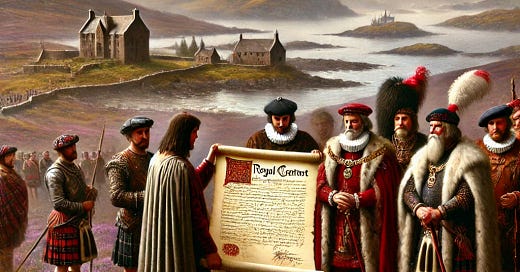As the medieval world gave way to modernity, most of Scotland's landscape underwent radical social and political shifts. On the mainland, ancient family holdings were increasingly absorbed by powerful nobles, and the communal traditions of clan landholding gave way to centralized estates and commercial agriculture. Yet, amidst this widespread consolidation, the Isles of Arran and Bute stood as peculiar exceptions — pockets where feudal and clan structures managed to survive, largely unchanged, well into the early modern era. A central symbol of this resistance to change is the Bute Charter of 1506.
Signed during the reign of James IV of Scotland, this remarkable document didn’t just confirm land titles — it told a story. It revealed how loyalty to the crown, Gaelic clan traditions, and martial service created a legacy of landholding that was uniquely preserved in these islands, long after it had faded elsewhere.
Keep reading with a 7-day free trial
Subscribe to Tales of Forgotten Scottish History to keep reading this post and get 7 days of free access to the full post archives.




